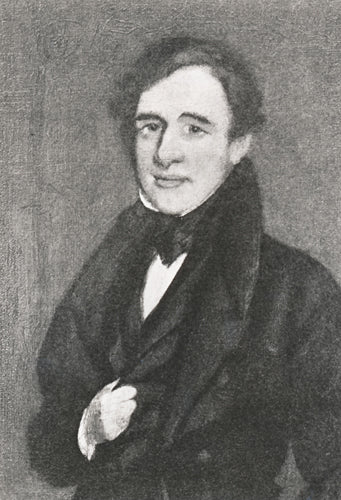A ‘gloomy epistle’ to a good friend
Katie Bell is a PhD student at the University of Leicester, UK who volunteers for the Museum’s curatorial team, cataloguing Dickens’s letters. Her dissertation is titled, The Diaspora of Dickens and explores the influence that the works of Charles Dickens had upon twentieth century American authors, particularly in the American South.
By Katie Bell
The second chapter of John Forster’s biography of Charles Dickens unveiled for the first time the author’s personal experience with poverty. One can imagine the shock with which Dickens’s friends, many of whom had known Dickens since his early journalist days, read this news. Modern-day readers are aware of Dickens’s personal experience with the Marshalsea Prison and Warren’s Blacking Factory, and for many of us, this understanding of Dickens’s personal life, leads to a deeper sense of felt relationships with his stories and characters. In 1824 John Dickens was held in the Marshalsea debtor’s prison for four months and continued to struggle with debt for the rest of his life. The financial needs of the family often fell on the eldest son, Charles.

Letter from Charles Dickens to Thomas Beard, 29 November 1834
On 29 November 1834, a twenty-two year old Charles penned a letter to his close friend and fellow journalist, Thomas Beard. The two young men both worked for The Morning Chronicle as reporters and the Beard and Dickens families were very close. In this letter, Charles tells his colleague and friend that he wanted to have ‘a few words […] on a very distressing subject’. The Dickens family had resided together at Bentinck Street, just north of Bond Street, but Dickens writes that due to ‘the state of my father’s affairs, and his want of attention to them’, a break-up of their family home became immediately necessary. John Dickens had built up outstanding debts for rent at Bentinck Street and to several wine merchants. It was the wine merchants who brought the latest suit against John Dickens in November 1834. Charles writes: ‘The fact is simply this – for a time, at all events, we must disperse ourselves as best we can […] My father I apprehend will not re-join his family for some time; my mother and two sisters will reside in the immediate neighbourhood of our present Lodgings – I hope in comfortable quarters, where they are not Strangers’. John Dickens could not join his family at their new lodgings because he had been taken to the Cursitor Street ‘lock-up house’ – the first phase of debtors’ prison where debtors were held while they tried to raise some funds to keep them out of the prison. Charles continues: ‘and I, taking Frederick with me, to instruct and provide for as I best can, shall repair to Chambers in Furnivals Inn’. Thus, the well-known first adulthood home of Charles Dickens at Furnivals Inn, a place where he would later take his wife Catherine to live before their move to Doughty Street, an abode which he utilized only a decade later in Martin Chuzzlewit (1843) as the residence for his bachelor character John Westlock, came about due to John Dickens’s continued lack of attention to his debts.

Letter from Charles Dickens to Thomas Beard, 29 November 1834
Charles Dickens confided to his close friend ‘Tom’, that his mother and sisters wished that the Beard family would ‘know the worst’ about the motivation behind the family’s move, as they did not wish ‘for concealment’. Dickens penned many famous lines about the importance of one’s relationship to community, and with this established understanding of where his values lay, it is easy to see how this twenty-two year old journalist would bloom into the author so well-known today for the importance he placed on social conscience. To Beard, young Dickens had this to say about the importance of friendships: ‘one never values friends so highly as in seasons of adversity, when their good feeling is best remembered, and when their loss would be most felt’.
The editors of The Letters of Charles Dickens note that following this ‘gloomy epistle’ as Charles Dickens called it, John Dickens sent a request to the young Beard asking for a loan of ‘two sovereigns’ for shoe repairs. It would seem that neither the Marshalsea nor the ‘lock-up house’ were able to have the desired effect of restraint upon the elder Dickens.
What we can infer from this letter is the Dickens family’s perseverance through the trauma of debt that seemed to loom over them continually. Throughout Dickens’s body of work, he frequently touches on characters who face adversity and, through a mix of self-determination and healthy relationships with their fellow men, survive. He said to Thomas Beard that he hoped his mother and sisters would not be ‘Strangers’ in their new lodgings, which underscores how important community was to the young Dickens. Families in his novels such as the Crachits, the Nicklebys and the Pinches all reflect an inner truth which Dickens hoped he could convey to his readership: that much can be accomplished through making mankind one’s business. In other words, to borrow a phrase from the Beatles, ‘I get by with a little help from my friends’.

John Dickens by John Jackson
Further reading:
Michael Slater, Charles Dickens: A Life Defined by Writing (London: Yale University Press, 2011), p. 45
Charles Dickens, The Letters of Charles Dickens, 12 vols (Oxford: Oxford University Press), I: ed. by Madeline House and Graham Storey (1965), pp. 46-48.
Museum Blog
This blog takes you behind the scenes at the Charles Dickens Museum, giving fresh insight on everything from discoveries new and old in our collection, to exhibitions, events and learning initiatives.
You’ll be hearing from a variety of Museum staff and volunteers, as well as guest curators, academics, artists and Dickens enthusiasts. Why not join the debate and let us know you thoughts on the latest blog by using our hashtag #CDMBlog

